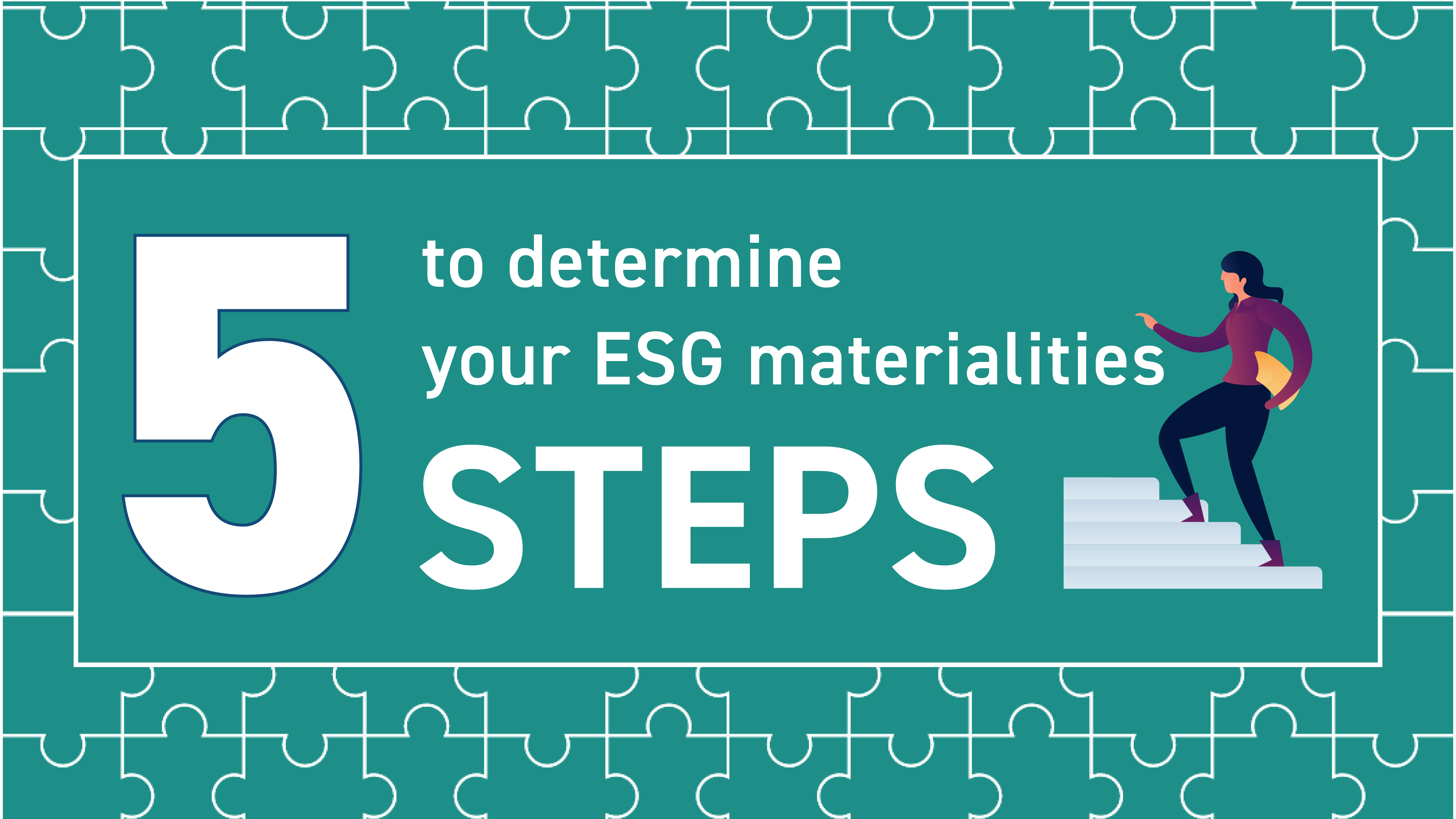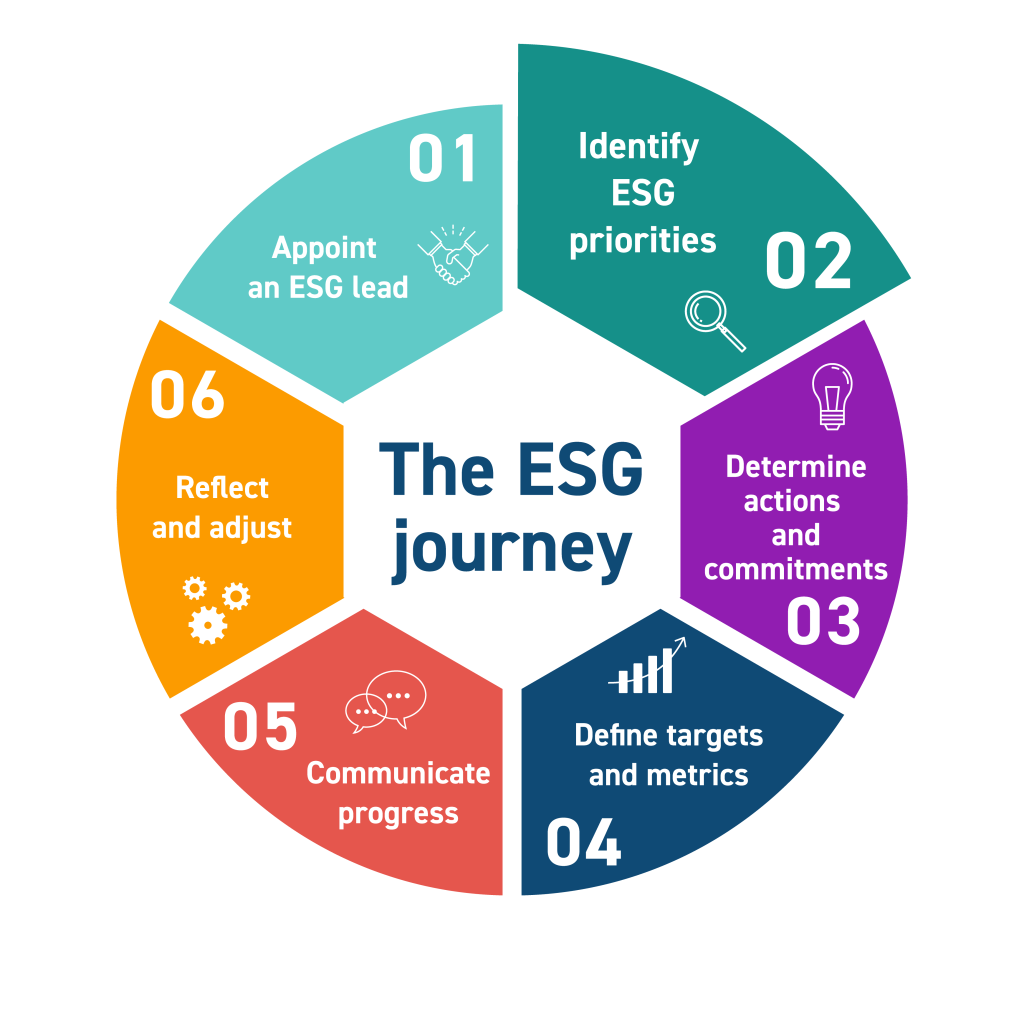
The original blog post in Japanese was published on August 8, 2022.
In the previous blog post, we introduced the steps in the ESG journey and introduced the materiality (priority issues) analysis, a key step in the cycle.
In this post, we continue with the second part of the cycle, identifying ESG priorities.

STEP 1: Identify key stakeholder perspectives
First, identify from a broad range of both internal and external stakeholders those whose points of view are most important to include in the materiality analysis.
| Internal | External |
|---|---|
| ・Employees ・Management team ・Founders ・Board of directors | ・Investors ・Partners ・Customers ・Suppliers ・Local communities ・Government |
STEP 2: Build a list of ESG topics to assess
In the next step, companies can start with the ‘essential ESG factors’ and add others most important for their business and stakeholders. This should be a prioritized, manageable list that includes no more than 10-12 issues.
Keep in mind that it is ultimately up to the companies to determine how broadly or narrowly they define the issues they’d like to consider. Below is a select set of issues we believe are most relevant to startups.
| Environmental | Social | Governance |
|---|---|---|
| ・Biodiversity impact ・Climate change mitigation ・Environmental product innovation ・Greenhouse gas emissions ・Materials use and waste ・Responsible supply chains ・Water management | ・DEI ・Community engagement ・Economic inequality ・Employee well-being and safety ・Employee training and development ・Ethical AI design ・Financial inclusion ・Human rights | ・Board composition ・Code of conduct / governance rules ・Data security and privacy ・Ownership share structure |
To develop this short list, we’ve drawn from various ESG, sustainability, and ethical design frameworks such as GRI, SASB, and EthicalOS as well as best practice examples we’ve seen from startups themselves (later in this blog series, we explore these frameworks and others in more detail).
For a longer list of issues to explore, see page 19 of this KfW Capital / BCG report.
STEP 3: Prioritize from your company’s perspective
For each issue, assess the level of impacts (both long- and short-term) on the company’s business on a scale of 1 to 10.
This analysis should be performed by one or more C-level team members and led by the CEO. The company’s other employees are, of course, not forgotten here. Because they are key stakeholders.
When thinking about the level of impact of each issue on the company, consider the following questions:
- “If we don’t have a clear strategy and take action on this issue, will my company’s operations, financial health, and/or reputation be at risk (now or in the future)? To what extent?”
- “Can taking action on this issue drive value (e.g., attract investors, new customers, revenues, etc.) for my company now or in the future? To what extent?”
Responding “yes” to one or both of these questions would imply a higher rating for the issue.
STEP 4: Prioritize from the stakeholder’s perspective
Now do the same for stakeholders, this time focusing on the level of importance they would place on each issue. While the company may have an idea of how its key stakeholders would rate each issue in respect to its importance, the best approach is to ask stakeholders directly for their input. This can be done via a survey, interview, or discussion.
If using interviews, those conducting them should also ask stakeholders for feedback on why they rated each issue as they did. In a survey, comment sections can be added to capture this additional input. Commentary from stakeholders is likely to be very valuable as the company eventually engages with the stakeholder on material topics and/or moves to determine how to action ESG at their company.
Startups should make sure not to overcomplicate this piece and use whichever approach is the most efficient and works the best for their particular situation.
STEP 5: Identify issues of particular priority
Sum the numbers from STEP 3 and 4 to identify the issue with the highest evaluation.
Companies of any stage or size face difficulties when they focus on too many priorities. We’ve found that between three and five priorities enables early-stage companies to focus their efforts and define ambitious, yet manageable, ESG actions.
Flag any issues where the company’s assessment and that of the stakeholders differs—particularly those that have been rated highly by stakeholders. These are issues for which specific actions may be required to reassure them that they are being sufficiently addressed.
These are the five broad steps in materiality analysis, explained at a high-level. We hope it provides guidance on how to get started on a holistic approach to ESG integration. In the next blog post, we will cover how to determine actions for each priority issue and the metrics to measure progress.
We thank Trista Bridges for her contributions to this post.